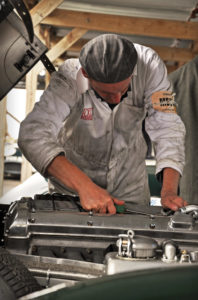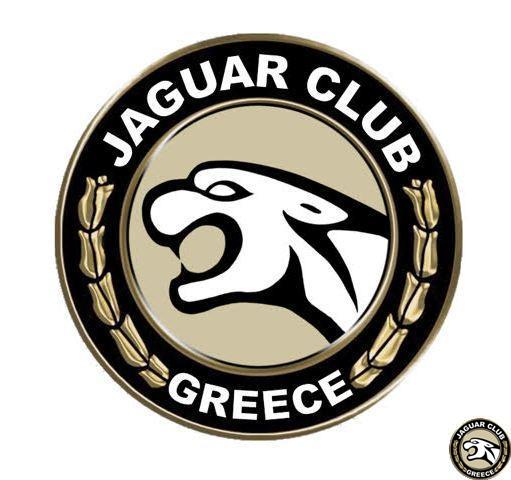Jaguar History
1948 – The Jaguar XK Arrives
1948 – The Jaguar XK Arrives
Before the war Lyons had expressed his ambition to build one of the world’s finest luxury cars. Lyons wanted this car to have a full size saloon body and be capable of 100 mph. During the war, he would get together with Heynes, Hassan and Baily during Sunday night fire watching sessions in Coventry to discuss and design a new engine. This would become the world famous XK engine that would stay in production for over 40 years and be the backbone of Jaguar’s success at Le Mans.
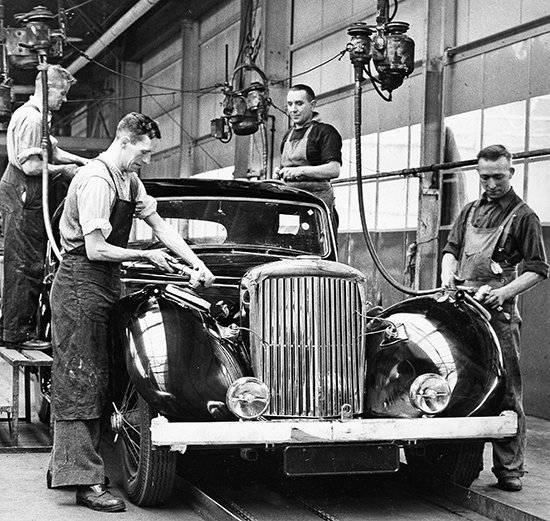
During the war, the manufacture of sidecars was increased for military use with nearly 10,000 made. Aircraft and fabrication work had the beneficial side effect of introducing the company to aircraft design and techniques but early post-war times were difficult for British companies. Amongst other problems were shortages of steel and foreign currency. The Government issued the dictum, ‘Export or Die’ and steel quotas were closely related to export performance – in other words, no exports, no steel! Production was ressurrected by reintroducing the pre-war range in largely unchanged form. At the same time it was decided to drop the SS name and simply call the company Jaguar Cars.
Post War Jaguar Mark IV Production Foleshill
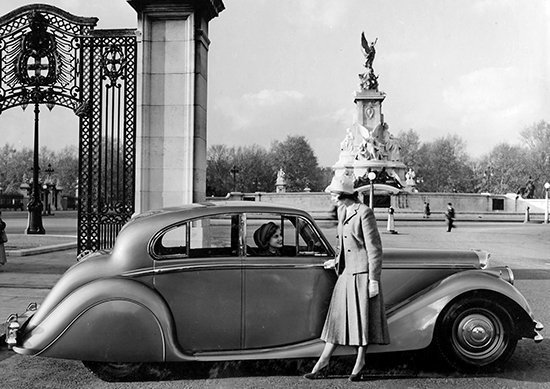
In September 1948 Jaguar announced its first new post-war, stop-gap model, the Mark V, which would carry the company’s fortunes for a couple of years. The main innovation was the adoption of independent front suspension, conceived by Heynes.
1948 Jaguar Mark V
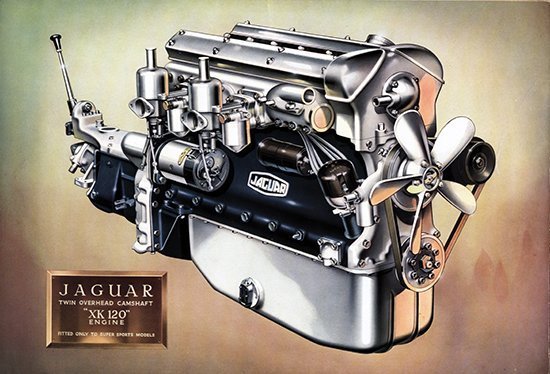
The exciting new engine was virtually ready for production. The designers bravely chose an overhead camshaft layout and after trying several configurations, the final engine was decided upon. It was to be a straight six of 3,442 cc and given the name XK. The achieved output was 160 bhp! Jaguar now had an excellent new chassis, a tremendously exciting new engine, but no sports car. So the decision was made to produce a small number of sports cars, which would generate publicity and perhaps gain a few competition successes. The task fell then to William Lyons to design a suitable body in just a couple of months for the 1948 Motor Show.
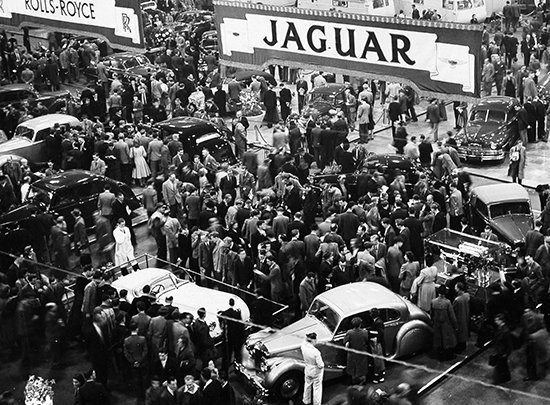
Jaguar XK120 Engine
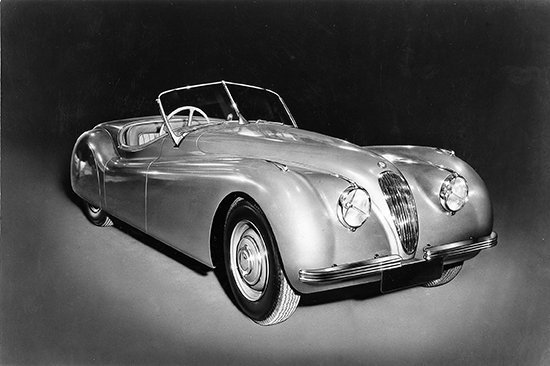
The result ‘stole the show’. It was known as the XK120 Super Sports. It was refined in the usual Jaguar manner, had unrivalled comfort for such a car, and to cap it all, was priced at just £998 (£1,298 with tax). The name was based on top speed which made it the fastest production car in the world. Indeed at first people were sceptical and refused to believe what was being claimed for the XK120.
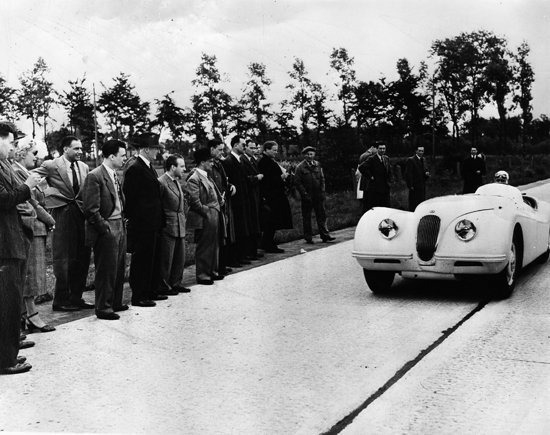
To convince the sceptics however, some tangible proof of the claimed prowess was needed. Accordingly Jaguar took over a closed section of dual carriageway at Jabbeke in Belgium where, in front of the assembled press, a standard XK120 proceeded to clock 126 mph. With the windscreen removed 133 mph was achieved. The orders came flooding in and Jaguar quickly realised that the couple of hundred originally intended could not possibly meet demand.
1948 XK120 Brochure Rendering
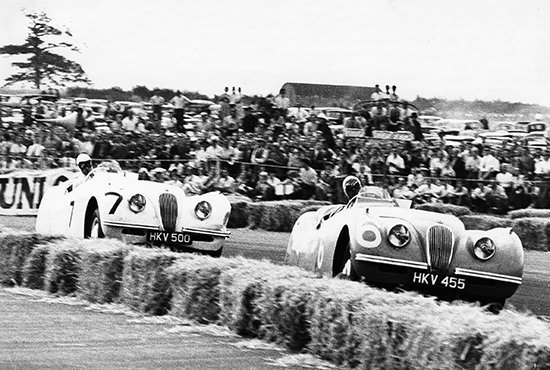
The XK’s racing debut was at Silverstone in a Production Sports Car race. Three cars were loaned by the factory to well known drivers Peter Walker, Leslie Johnson and Prince Bira of Siam. Bira was unlucky enough to have a puncture, but the others finished first and second.
1949 Silverstone
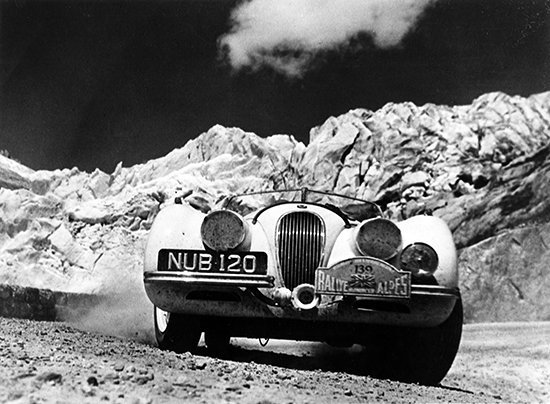
In 1950 it was decided to take three cars to France for the world famous Le Mans 24 hour race, merely to assess their capabilities against international opposition. On the rallying front Ian Appleyard and Lyon’s daughter Pat, drove their XK120, NUB 120, to success in the Alpine Rallies of ’51 and ’52 and the Tulip Rally in ’51 and became one of the most successful rally cars of all time.
1950 Alpine Rally Furka Pass
